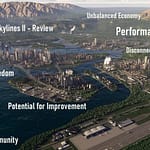Welcome to the crucial domain of radar control, where skilled professionals play a pivotal role in ensuring the safe and efficient movement of aircraft within airspace. In this comprehensive guide, we’ll explore the essential responsibilities, skills, and strategies needed to excel as a radar controller.
Embracing the Role of a Radar Controller
As a radar controller, you’re responsible for monitoring aircraft movements within designated airspace using radar surveillance systems. Your role involves providing air traffic control services, including vectoring aircraft, issuing clearances, and maintaining safe separation between aircraft. Let’s delve into the key responsibilities that define the path of a radar controller:
- Air Traffic Surveillance: Your primary responsibility is to monitor radar displays to track the position, altitude, and speed of aircraft within your assigned airspace. This involves using radar data to provide air traffic control services, including sequencing and spacing aircraft, resolving conflicts, and ensuring safe separation between aircraft.
- Aircraft Vectoring and Guidance: You’ll provide radar vectors to aircraft, directing them along designated flight paths and altitudes to maintain safe separation and facilitate efficient traffic flow. This may involve issuing headings, altitude assignments, and speed adjustments to guide aircraft safely through congested airspace.
- Communication with Pilots: You’ll communicate with pilots using radio communication to provide instructions, clearances, and traffic advisories. This involves using standardized phraseology and protocols to ensure clear and effective communication between controllers and pilots, enhancing situational awareness and safety.
- Weather Monitoring and Advisories: You’ll monitor weather conditions, including precipitation, turbulence, and visibility, and provide pilots with weather advisories and updates to assist with flight planning and navigation. This may involve issuing weather alerts and rerouting aircraft to avoid hazardous weather conditions.
- Emergency Response and Coordination: In the event of emergencies, such as aircraft malfunctions or airspace intrusions, you’ll coordinate emergency responses, including providing assistance to distressed aircraft, issuing alerts to other aircraft in the vicinity, and coordinating with emergency services to ensure a safe and timely resolution of incidents.
Skills and Qualities of a Successful Radar Controller
To excel as a radar controller, you’ll need a unique skill set and a commitment to safety, precision, and effective communication. Here are some essential attributes that define a successful controller in the radar control profession:
- Technical Proficiency: A strong understanding of radar principles, air traffic control procedures, and aviation regulations is essential for effectively monitoring aircraft movements and providing air traffic control services.
- Decision-Making Abilities: The ability to make quick and sound decisions under pressure, prioritizing safety and efficiency while considering factors such as aircraft performance, weather conditions, and airspace congestion.
- Communication Skills: Clear and concise communication, both verbal and written, is essential for conveying instructions, issuing clearances, and providing traffic advisories to pilots, enhancing situational awareness and facilitating safe and efficient aircraft operations.
- Attention to Detail: Precision and accuracy are critical in radar control, where small errors or oversights can have significant consequences for aircraft safety and airspace management.
- Stress Management: The ability to remain calm and focused under stressful conditions, such as high traffic volume or emergency situations, maintaining situational awareness and making sound decisions to ensure the safety of aircraft and passengers.
Career Opportunities and Growth
As a radar controller, you’ll find numerous opportunities for career advancement and growth within air traffic control facilities, airport operations, aviation regulatory agencies, and consulting firms. With the increasing demand for air travel and the modernization of air traffic management systems, the need for skilled controllers who can manage airspace safely and efficiently continues to grow, offering rewarding and fulfilling career opportunities for professionals dedicated to aviation safety and efficiency.
Conclusion
Radar control is a critical component of air traffic management, and radar controllers play a vital role in ensuring the safe and efficient movement of aircraft within airspace. If you’re considering a career as a radar controller, embrace the opportunity to guide aircraft safely through the skies, providing air traffic control services that contribute to the safety and efficiency of air travel. With your skills, expertise, and dedication, you’ll not only build a successful career but also help ensure the safety of passengers, crew, and aircraft in the dynamic and challenging environment of air traffic control.












